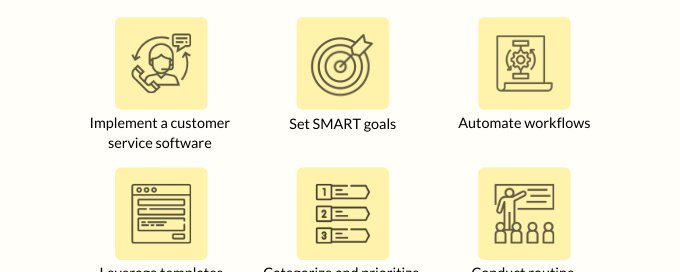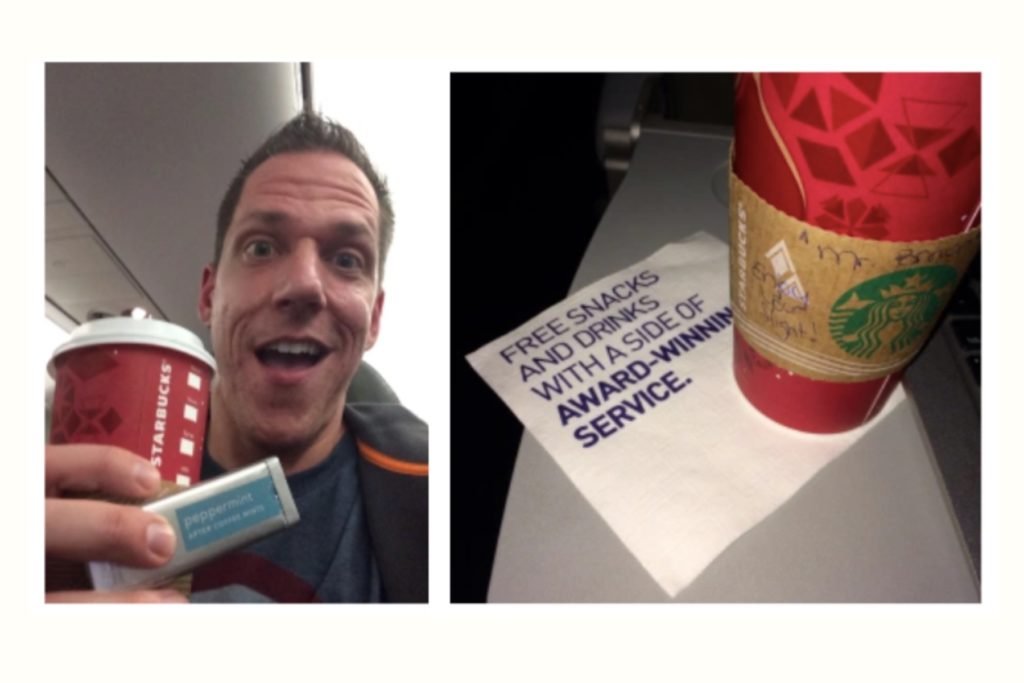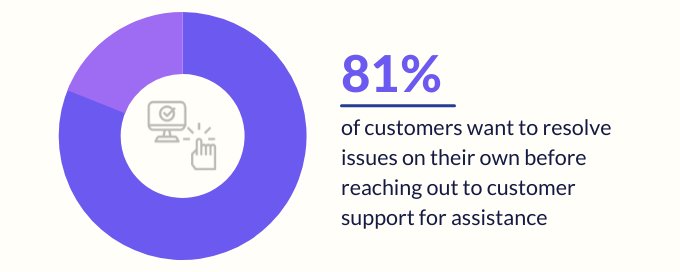How to Provide Great E-Commerce Customer Service

Table of contents
E-commerce today is more than just an online marketplace; it’s a bustling digital world where customer service is the heartbeat of every transaction. With the rise of e-commerce, customer expectations have evolved significantly. Shoppers now seek not just convenience but also quick and effortless issue resolution.
The ability to engage with customers around the clock and across the globe has opened unprecedented opportunities for businesses. Yet, it has also introduced unique challenges, particularly in managing customer service in an online-only landscape.
So, what can e-commerce retailers do to overcome these challenges and ensure expectations are met or even exceeded?
We’re about to map out eight actionable tips to provide great customer service in the e-commerce space. But before we dig in, let’s understand what e-commerce customer service is all about.
Key Takeaways:
- Defining customer service: E-commerce customer service refers to the support you provide online shoppers; it’s like being a helpful shop assistant in a digital store.
- Importance of choosing a helpdesk in e-commerce: For an e-commerce platform such as custom frames, a helpdesk can assist in managing high volumes of inquiries. Features to look for in a helpdesk: Intuitive interface, omnichannel support, reporting and analytics, cross-department collaboration, and range of integrations.
- Assist online shoppers with faster response time: Customers expect quick responses – ideally within an hour or less. Tips: Omnichannel support, auto-replies, online FAQ/knowledge base, and chatbots.
- Meet your customers where they are: Importance of omnichannel support. Tips: Centralized customer service software, specific response protocols for each channel, and real-time monitoring tools.
- Offer Self-service Channels: A lot of customers who do online shopping prefer solving problems independently. Invest in a knowledge base, community forum, and chatbots. Tips for setting up a knowledge base: Identify common queries, organize content, easy search functionality, use visuals and guides, keep it updated, and gather feedback.
- Use automation without losing the personal touch: Automate repetitive tasks of support agents working in e-commerce. Tips: Route queries to the relevant agent based on keywords or sender info. Use email templates with placeholder variables for personalization.
- Track mentions on social media: Monitor brand mentions and comments on social media. Tools like Hootsuite can help with such monitoring, and also perform sentiment analysis – positive, negative, or neutral – on social media opinions about your brand.
- Seek out and act on customer feedback: Gather feedback through customer satisfaction surveys and open-ended questions. Balance qualitative and quantitative feedback. Offer incentives for participating in feedback surveys.
- Track and optimize your results: Monitor key customer service metrics: NPS, Cart Abandonment Rate, CSAT, CES, churn rate, average revenue per customer, LTV. Using tools like Hiver can help in tracking metrics and quantifying your support team’s performance.
- Importance of E-commerce customer service: Creates first impressions, builds trust, provides a feedback loop, enhances loyalty and retention, generates word of mouth, resolves issues, differentiates the brand, increases sales, and reduces cart abandonment rates.
- Beyond these key points, eCommerce businesses must address the unique needs of B2B customers. Addressing challenges such as ERP integration, personalized user experience, and automating ordering processes is crucial and not easy. But turning to B2B eCommerce consulting can help tailor solutions and meet the complex requirements of B2B transactions, helping to strengthen customer relationships and business growth.
Table of Contents
- Key Takeaways:
- What Is E-commerce Customer Service?
- 8 Best Practices for Effective E-commerce Customer Service
- 1. Choose a support tool that helps your team stay organized
- 2. Improve your response time
- 3. Meet your customers wherever they are
- 4. Offer self-service channels to your customers
- 5. Use automation without losing the personal touch
- 6. Track mentions of your company on social media
- 7. Seek out and act on customer feedback
- 8. Track and optimize your results
- Why Is E-commerce Customer Service Important?
- Take Your E-commerce Customer Experience to the Next Level
- FAQs Around E-commerce Customer Service
What Is E-commerce Customer Service?
E-commerce customer service is the support you provide online shoppers; it’s like being a helpful shop assistant in a digital store. It’s all about assisting customers through their journey on your website – from helping them navigate products or services and select what matches their expectations to ensuring a smooth checkout process and the timely delivery of goods.
E-commerce customer service can be quite tricky to get right, given that everything happens online and that in-person, face-to-face interactions don’t take place. That’s why it’s even more important to come across as trustworthy and reliable if you’re running an online business.
8 Best Practices for Effective E-commerce Customer Service
Here are the top e-commerce customer service best practices. If you’re already implementing some of these strategies, see how to scale them further. Meanwhile, if there’s something from this list that you haven’t taken action on yet, it could be something you and your team could take up as an initiative.
1. Choose a support tool that helps your team stay organized
Employees in the e-commerce sector spend a substantial amount of time managing emails, especially support staff since they’re constantly communicating with customers.
This problem becomes more pressing when you consider the fact that e-commerce businesses receive 65 inquiries per 100 orders.
Due to such high volume, a robust helpdesk becomes a must-have tool. It helps you streamline your e-commerce customer queries, automate mundane tasks, and auto-assign queries—all of which can significantly enhance productivity, reduce costs, and improve customer retention.
For example, say you run an e-commerce store for clothes. You have a teammate who handles all the queries related to size issues. With the right customer service software, you can have all incoming emails related to size issues assigned to them automatically.
Here are some important features to keep in mind when choosing a helpdesk:
- Intuitive Interface: The software should be user-friendly, like Hiver, that works on top of Gmail, ensuring your team can navigate and utilize its features without extensive training.
- Omnichannel Support: Should be able to offer omnichannel support across email, live chat, knowledge base, voice, and WhatsApp, all integrated for seamless customer interaction.
- Reporting and Analytics: Can generate rich, visual reports and dashboards for tracking key customer service metrics, SLA compliance, and customer satisfaction surveys.
- Cross-department Collaboration: Should have collaborative features for shared inboxes, like notes and @mentions, to enable seamless collaboration within and across teams on customer queries.
- Integration: Integration with essential apps like Aircall, Asana, Jira, and Salesforce, enhancing functionality of the tool and workflow for agents.
- Email Management: It should offer features for shared inboxes like labels, conversation IDs, customizable email templates, and shared drafts to facilitate efficient email handling and collaboration.
With these features, you can ensure your agents are armed to tackle and resolve queries quickly and efficiently – irrespective of the volume.
| DID YOU KNOW? On average, e-commerce businesses receive 65 customer inquiries for every 100 orders. This highlights the role of efficient customer service in managing high inquiry volumes and maintaining customer satisfaction. |
2. Improve your response time
As we discussed earlier, e-commerce customers expect quick responses.
One recent survey found that nearly one-third of customers expect businesses to respond to emails within one hour or less. In comparison, CRM software provider SuperOffice found that the average company takes 12 hours to respond to emails.
That’s quite a gap! And what does this gap lead to? Around 35% of consumers have said they’ve switched to competitors due to long wait times.
So, how can you improve your response time? Here are some quick tips:
- Consider offering omnichannel support to ensure your customers can reach out to you via a channel that’s comfortable for them and prevent the overloading of a single channel, say email.
- Set up auto-replies and ticket routing through automation to handle common inquiries without delay, enhancing efficiency.
- Provide an online FAQ or knowledge base for instant answers, reducing the need for direct contact with agents.
- Implement chatbots to handle basic inquiries on return policies or product descriptions, ensuring no website visitor is left waiting.
Use analytics to help the support team in your company measure performance and stay competitive.

3. Meet your customers wherever they are
Customer expectations for e-commerce are sky-high. Why? Big names like Amazon and Apple have set some high standards. Plus, the 24/7 nature of e-commerce means customers want to reach you anytime, anywhere.
They’re looking for seamless omnichannel support via email, phone, social media, live chat, or a knowledge base.
But here’s the kicker: you don’t need to be everywhere. Just be where it matters most for your customers.
Remember, it’s all in the details. Quick responses and interconnected support channels can make a world of difference. Here are some quick tips to action these:
- Use integrated customer service software, such as Hiver, that consolidates inquiries from email, social media, and other channels into a single dashboard, enabling quicker, more organized responses.
- Develop and implement specific response protocols for each channel, tailored to the unique nature and customer expectations of that channel. This could be quicker, informal replies on social media and detailed responses via email.
- Utilize real-time monitoring tools to alert your team to new messages or social mentions, ensuring that no customer query goes unnoticed and that all channels have minimal response times.
Here’s an example of outstanding customer service by JetBlue for you: A passenger tweeted his disappointment about missing his Starbucks coffee pre-flight. Not only did JetBlue swiftly offer free Dunkin’ Donuts coffee onboard, but to everyone’s surprise, they handed him his beloved Venti Mocha from Starbucks mid-flight.
It wasn’t just about quick responses; they delivered a truly delightful and memorable experience. Talk about winning at customer service!


4. Offer self-service channels to your customers
As much as 81% of customers want to try to solve their problems or get their questions answered on their own before contacting customer support. Time and convenience matter, and well-designed self-service options are quick, convenient solutions.
Knowledge bases, FAQs, community forums, and chatbots are the top self-service options. Here are some of their main advantages:
- They’re available 24/7/365.
- They’re more cost-effective when you want to be there for customers round-the-clock. Hiring human agents for multiple shifts can be expensive.
- They allow support teams to be more productive as they can avoid answering common questions repeatedly and focus on more complex customer issues.
It’s important to note that no self-service solution is “set it and forget it.” Here are some actionable tips to set up a knowledge base for e-commerce customer service:
- Identify Common Queries: Analyze customer service interactions to determine the most frequently asked questions and issues like queries about refunds or product descriptions.
- Organize Content: Structure the knowledge base with clear categories and an intuitive hierarchy related to your e-commerce products and services. For instance, you can have a section on exchange policy to ensure your customers know which products are exchangeable and within what time frame.
- Easy Search Functionality: Implement a robust search engine within your knowledge base to help users quickly find the answers they need. Most customer service software have this feature in-built for knowledge bases.
- Use Visuals and Guides: Include product guides, screenshots, and videos to provide step-by-step solutions that are easy to follow. Say you sell a smartwatch on your website. You can have a video you created with AVI video editing software explaining how to set up the smartwatch, sync it with other devices, and use its key features.
- Keep It Updated: Regularly review and update the knowledge base to ensure all information is current, especially for product updates or policy changes.
- Gather Feedback: Encourage and track user feedback on knowledge base articles to continuously improve and refine the content.

5. Use automation without losing the personal touch
HubSpot found that personalized emails work 202% better. Why? Customers crave genuine conversations, not just automated promotional mailers. They want to feel recognized and valued.
So, how can e-commerce customer service strike the right balance between speedy resolution and personalized communication? By optimizing workflows with smart automation.
For instance, route queries to customer support agents based on keywords, sender info, or recipients. This will ensure that customer inquiries are quickly directed to the most qualified team members, leading to more accurate and efficient resolutions.
To nail personalization, use email templates with placeholder variables. These variables automatically fill in specific details, like their name, latest order ID, etc., from your contact list, ensuring every email feels tailored.
For instance, an e-commerce clothing store can use email templates with placeholder variables for personalization. In this case using AI in eCommerce can be very effective. When a customer buys a dress, they receive an automated email that starts with:
“Hi [Customer’s Name], thank you for purchasing [Dress Name]! Your Order ID [Order ID] is being processed. You can track your order here [Tracking Link]”
This approach makes each customer feel individually recognized and keeps them informed about their specific order, enhancing the overall customer experience.
| Use smart automation right from your Gmail account. |
6. Track mentions of your company on social media
Your customers are talking on social media, whether they’re thrilled or ticked off. And you need to listen.
Apps like Mention notify you in real-time about any chatter related to your company – from brand mentions to feedback on specific product phrases. Stumble upon a comment like “The app is confusing to navigate”? You’ve got first-hand feedback to act upon.
What stands out with Mention is its instant notifications. Even if you don’t have an immediate solution, just acknowledging the feedback boosts your brand’s trustworthiness.
Another tool that can help is Hootsuite Insights. It doesn’t just tell you what’s being said; it gauges the emotion behind tweets and posts. This sentiment analysis can be a lifesaver, helping you avert PR crises in their budding stages.
Apart from relying on tools, it might be wise to team up with a Business-to-Business (B2B) PR company. They can guide you on how to respond to feedback and drive online interactions with customers and prospects.
7. Seek out and act on customer feedback
Seeking out and acting on customer feedback is a vital strategy for e-commerce businesses aiming to enhance their service strategy. This allows businesses to understand how their customers perceive their products and services and get insights into what needs to be improved.
One effective way to gather this feedback is through in-built customer satisfaction surveys (CSAT) of customer service platforms like Hiver. To collect this data, businesses can ask customers to rate their satisfaction on a scale, typically from 1 (very dissatisfied) to 5 (very satisfied). The average of these ratings gives the CSAT score, offering a clear numerical measurement of customer satisfaction levels. This score helps gauge customer happiness and engagement, allowing businesses to compare their performance against industry benchmarks.
Qualitative feedback, collected through open-ended questions, is equally crucial. Questions like “What are the roadblocks (if any) you face while using our product/service” help you dig deep and understand your customers better. Qualitative feedback provides a more detailed, in-depth view of the customer experience, helping businesses understand the reasons behind customer perceptions and feelings. This type of feedback is precious in revealing nuanced issues and helping customers feel heard and valued.
Implementing the right feedback strategy requires careful planning. Offering incentives, like discounts or free gifts, can encourage customers to participate in feedback surveys. It’s essential to balance qualitative and quantitative feedback collection to gain a comprehensive view of customer experiences and expectations.

8. Track and optimize your results
It’s crucial to monitor customer service metrics so that you have complete visibility into the quality of support. When you track the right metrics, you can underline which areas need improvement and increase your team’s efficiency.
To do this right, arm yourself with tools that help gather and dissect customer experience data. Key metrics to watch for e-commerce businesses include:
- NPS (Net Promoter Score): How likely are your customers to recommend you to their friends and family?
- Cart Abandonment Rate: The percentage of online shoppers who add items to their cart but exit without completing the purchase. This metric helps identify potential barriers in the buying process.
- CSAT (Customer Satisfaction score): How satisfied are your customers with the support they received?
- CES (Customer Effort Score): How easy was it for your customer to have their issue resolved?
- Churn rate: The percentage of customers who stopped using your product during a certain time.
- Average revenue per customer: How much do customers typically spend at a time?
- LTV (Lifetime Value): How much do customers typically spend over their entire relationship with your brand?
Hiver enables efficient tracking of customer satisfaction metrics like CSAT right from your Gmail account. With its advanced analytics features, e-commerce support teams can easily monitor metrics such as response times and resolution rates, and even generate custom reports which are critical for understanding and improving the customer experience.
Additionally, Hiver’s integration capabilities with other tools can aid in comprehensively monitoring and analyzing customer behavior metrics like Cart Abandonment Rate, offering insights to optimize the e-commerce shopping experience.
Why Is E-commerce Customer Service Important?
Trust and reliability become paramount when a customer can’t physically touch the product or meet the seller. It’s in this digital landscape that customer service plays a pivotal role.
Let’s unpack why customer service is so integral for e-commerce businesses:
- First Impressions Matter: Your customers have multiple tabs open with many options available, just a couple of clicks away. This is why responsive and helpful online support is a must-have for your e-commerce store. It tells customers you’re serious about ensuring they have a good experience.
- Builds Trust: With so many online scams and unreliable sites out there, providing excellent customer service demonstrates your legitimacy and builds confidence in your brand.
- Feedback Loop: Customer service interactions give you direct insights into what’s working and what’s not. It’s your real-time feedback mechanism to improve and innovate.
- Loyalty and Retention: When customers feel heard and valued, they’re more likely to return and shop again. Retaining a current customer is often more cost-effective than acquiring a new one.
- Word of Mouth: Happy customers are your best marketers. They’ll not only return but also spread the word about your brand, boosting your reputation.
- Resolving Issues: Mistakes happen – shipments get delayed, and products might be damaged. Good customer service efficiently addresses and resolves these hiccups, turning potentially negative experiences into positive ones.
- Differentiation: With many e-commerce platforms selling similar products, superior customer service can be a crucial differentiator. It’s one way to stand out in a crowded market.
- Increased Sales: Easily accessible and helpful customer service can guide customers through the buying process, answering questions and recommending products, all of which can boost sales.
- Reduced Cart Abandonment Rates: Good customer service addresses concerns and clarifies doubts promptly, providing the reassurance that leads customers to complete their purchases instead of abandoning their carts.
Take Your E-commerce Customer Experience to the Next Level
E-commerce today is extremely fast paced. You need to be able to provide your customers with a memorable experience – right from the moment they land on your website/app till they make a purchase and receive their product or service.
Along this journey, the quality of support and assistance that is available to them can be a game-changer. That’s why it’s important to have the right facilities to answer their questions in a timely manner.
When is my order getting delivered? Why is there a delay in delivery? Why are my favourite sneakers out of stock and when are they going to be restocked?
To stay on top of such customer inquiries, Hiver can help. It transforms your work inbox into a centralized help desk. It gives you visibility into all customer queries – Who is working on what customer query? What is the status of a particular query? Why is there a delay in resolving a query?
Hiver also helps your support team collaborate on customer inquiries – through features like notes, shared labels, and more.
Sounds interesting? Schedule a free demo
FAQs Around E-commerce Customer Service
- What is the importance of customer service in e-commerce?
Customer service is crucial in e-commerce for building trust, enhancing the shopping experience, and driving customer loyalty and retention in a competitive online market.
- How can e-commerce sites improve their customer service?
E-commerce sites can improve customer service by implementing efficient support tools, offering omnichannel support, personalizing interactions, using automation, and providing self-service options.
- What are the best practices for e-commerce customer service?
Best practices include organized support tools, quick response times, omnichannel support, self-service options, personalization in automation, tracking social media, and continuous feedback and metric monitoring.
- How does Hiver enhance e-commerce customer service?
Hiver enhances e-commerce customer service by streamlining email management, providing omnichannel support, and offering advanced analytics for tracking key metrics.
- Can Hiver integrate with other business tools?
Yes, Hiver integrates with various business tools like Aircall, Asana, Jira, and Salesforce, enhancing agent functionality and workflow efficiency.
- What makes Hiver suitable for e-commerce customer service teams?
Hiver is suitable for e-commerce customer service due to its intuitive interface, collaborative features like shared inbox, notes, and @mention, etc., strong integration capabilities with other tools, and robust analytics capabilities.

































